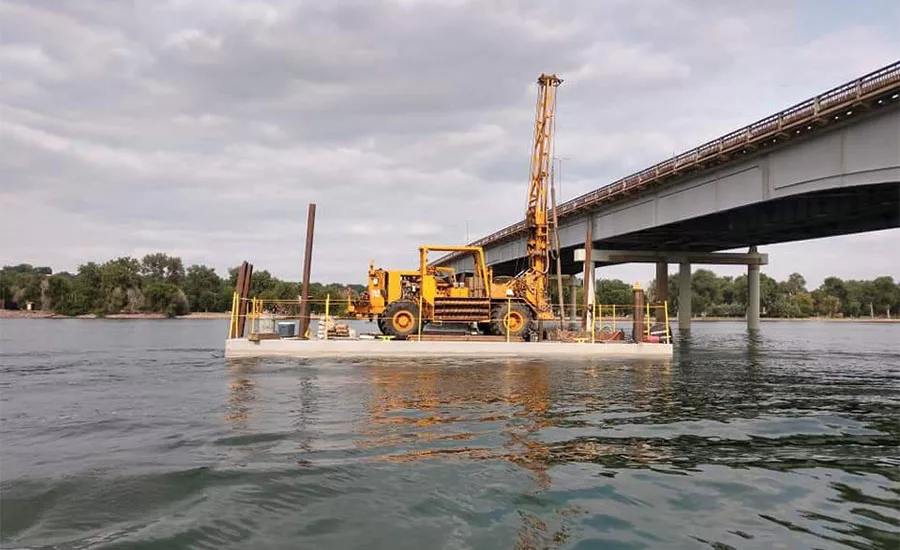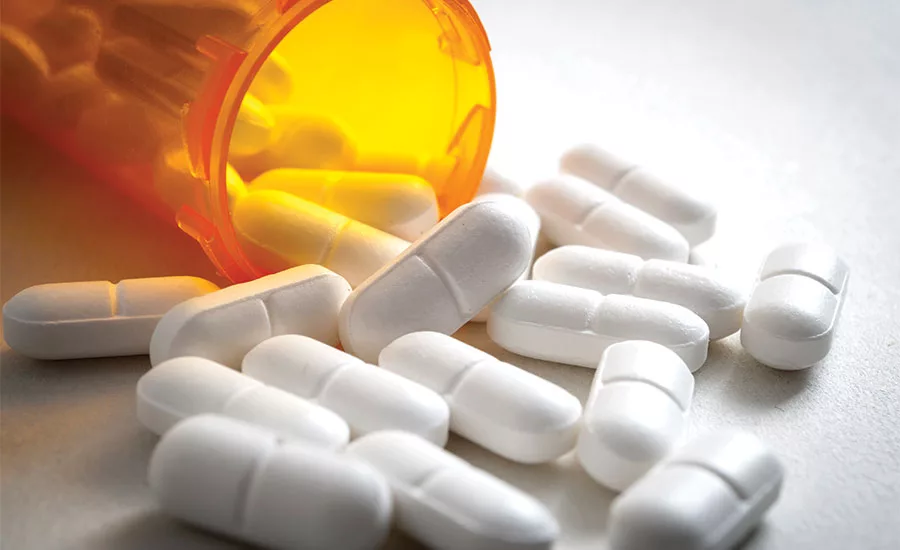How to Spot Drug, Alcohol Issues in Drilling Crews

Safety sensitive functions require alert mental focus and quick reaction times. Regardless of where and under what conditions a drilling company operates, a robust substance abuse program is critical for safe operations.
Source: Jim Wright

Many opioid addicts start their habit by “borrowing” a few pills from their spouse or a friend’s prescription. If the prescription is not in your name, that is illegal drug use and is considered a positive drug screen.
Safety is an issue that faces many industries, none of which are quite like the drilling industry. As Brock Yordy discussed in his November 2018 National Driller article, “drilling is one of the only construction industries that openly accepts jobsite injuries as part of the job.”
Those injuries — the badges of honor — that drillers “proudly” show off as a sign of drilling experience give the false impression that quick work comes before safety. But what about if a driller is high, drunk or sleep-deprived? Do those marks of experience and unsafe tendencies mean something different then? I believe most of you (or so I hope) would answer yes.
It’s become more common in the last few years to have workers on the jobsite who suffer from drug addiction, alcohol dependency/heavy use of alcohol, or lack of sleep. Whether it’s opiates, painkillers or a few beers after work, impairment on the jobsite puts everyone’s safety at risk.
In fact, there’s been an alarming increase in the percentage of U.S. workers in safety-sensitive jobs who flunked DOT-mandated drug tests. And, according to the United State military, losing one hour of sleep per night for a week will cause a level of cognitive degradation equivalent to a .10 blood alcohol level (source: https://oem.bmj.com/content/57/10/649).
As an employee, are you putting people at risk with your out-of-work behaviors? Do you understand the consequences of a night out drinking or sleep deprivation? As a business owner, do you know how to spot the signs of an impaired employee? Do you have rules and regulations in place? And do you know how to promote a culture of safety, of communication, for all parties involved?
National Driller caught up with Jim Wright, director of safety and health at Terracon, at NGWA’s Groundwater Week in early December. Wright, who has over 25 years of safety experience in drilling and construction operations, presented a session called Drunkbusters, where he explained the effects of different drugs and other impairments, and the impact they have on workers on the jobsite.
This interview has been edited for space and clarity.
Q. Can you tell me a little bit about what you’ve found in terms of substance abuse on the jobsite? How is it affecting drillers?
A. I haven’t seen specific studies about drillers, as we normally are lumped in with construction. The National Drug Free Workplace Alliance estimates nearly 12 percent of construction workers use illicit drugs and 16 percent have heavy alcohol use. Many people don’t make the connection that alcohol is an addiction and can be just as dangerous as drug use. One parallel to increased construction worker substance abuse is an increase in suicide. Construction worker suicides are up 47 percent from 2012 to 2015 and increased substance abuse is a contributing factor. Stress can lead to substance abuse, and substance abuse can lead to suicide. Substance abuse is a complex web with all paths leading to negative results.
Q. What about the number of fatalities on the jobsite that are related to drugs?
A. The 2016 Bureau of Labor Statistics National Census of Fatal Occupational Injuries states, “Overdoses from the non-medical use of drugs or alcohol while on the job increased from 165 in 2015 to 217 in 2016, a 32-percent increase. Overdose fatalities have increased by at least 25 percent annually since 2012.” The National Institute on Drug Abuse reports that in the U.S., there were over 72,000 deaths in 2017, with opioids accounting for 68 percent of those. No matter what the statistic, one overdose is too many. Our coworkers, friends and loved ones are overdosing every day, and it needs to stop!
Q. How do drugs and alcohol affect performance and safety?
A. Every drug has different effects on the body. Common symptoms for all include drowsiness, fatigue, decreased reaction times, poor decision making and dehydration — which all affect worker and driver safety. These effects can cause poor quality of work or equipment damage, and substance abuse can lead to workplace violence or theft. The other thing about substance abuse is that impairment doesn’t just put the user at risk. A drill rig operator with delayed reaction time from opioid use puts his entire crew at risk for injury. A crane operator can damage a great deal of property if he drops the load. The driver of that 80,000-pound tractor trailer who is fatigued after smoking pot all weekend risks the lives of everyone on the highway. One of the big excuses from drug users is, “What I do on my own time is my business!” I agree — until the residual effects put my family or me at risk.
Q. Is there one that’s deemed more “dangerous” or prevalent? Prescription drugs (opiates) seem to be a common problem for construction workers/contractors because of jobsite injuries.
A. Opioids (used primarily as painkillers) are definitely the major health crisis today. Nearly 30 percent of patients prescribed opioids misuse them. They are highly addictive and almost impossible to give up without professional help. I recently read an article that stated methamphetamine use was on the rise after several years of decline. As the government tightens up the availability of opioids, we should monitor other drugs for increased use, especially ones that are relatively easy to get, like meth and marijuana. Cocaine and PCP are not as common. You mention “prescription” drugs in your question. Many opioid addicts start their habit by “borrowing” a few pills from their spouse or a friend’s prescription. If the prescription is not in your name, that is illegal drug use and is considered a positive drug screen. Never use someone else’s prescription medication!
Q. With the new marijuana legalizations all over the country, what does that mean for employers? How will that affect workers and job performance? It seems like a very confusing time.
A. I’ll reinforce here that I am not a lawyer! While the legal landscape is changing daily, it isn’t that confusing. So far, no states have prevented employers from instituting a drug-free workplace policy and enforcing that policy. It is also important to note that the drilling industry is regulated by DOT (Federal Motor Carriers Safety Administration) substance abuse requirements for commercial drivers and employees performing safety sensitive functions. Shipping, transporting and receiving hazardous materials, crane operations, working near railroads or pipelines, heavy equipment operation and utility work are all safety sensitive functions, and it is highly unlikely these jobs would ever be exempt from marijuana testing — at least until an effective tool for measuring impairment levels becomes available. If you want to smoke marijuana, the drilling business is not for you!
Q. How does this, and drug testing, affect the labor shortage?
A. It definitely has some effect. Quest Diagnostics reports positive marijuana tests are up about 3 percent year-over-year, and in states legalizing marijuana, they are up 10 percent. A Fifth Third Bank study estimates there are 1.4 million prime age men not entering the work force because of drug use or because of criminal convictions related to drug use. We’ve been talking primarily about substance abuse affecting drillers, but even if you are successful in giving up an addiction, a felony drug conviction follows you for the rest of your life and affects your ability to earn a living. The concerning thing about this is, where does the next generation of drillers come from? It can take three to five years to train a driller. As our labor pool is shrinking and marijuana use becomes acceptable, who is going to run the rigs in 2025?
Q. What should employers look for? What can they do to stop/help their employees?
A. Supervisors should look for substance abuse clues. Change in behavior, decreased job performance, showing up to work late, drowsiness, nausea, fatigue, and excessive sweating with odors of alcohol or marijuana are all clues. I suggest employers invest in a reasonable suspicion training for supervisors. Many local charities, hospitals, or law enforcement agencies will give workshops on substance abuse identification and prevention.
“As a business owner, if your employees know you care ... they will come to you for help and you will have an employee for life.”
– Jim Wright
To help workers or stop drug use, [employers should] communicate useful information to employees and their families. Substance abuse isn’t just a problem at work or at home. It overlaps all areas of the addict’s life. Communicate! There are many free resources available that employers can print and mail to workers, or use to create workplace posters or as a topic for a weekly safety meeting. Employers should offer an Employee Assistance Program (EAP), communicate the benefits and, if possible, pay for the first visit. Your medical insurance provider or broker should have information on EAP programs and resources available to share with employees. Many addicts are just waiting for a way out; give them every opportunity to find it.
Q. How can companies protect themselves from accidents involving substance abuse?
A. First, have a written drug-free workplace policy and communicate that policy to your employees. Second, incorporate pre-employment, random, post-accident, and reasonable suspicion drug and alcohol testing. Your testing program isn’t about “catching” the user. It’s about providing a safe workplace for your workers and others in the community. Third, educate your managers, supervisors, workers, and their families about the dangers of drug or alcohol use in the workplace. Approach your communication from a standpoint of care and concern — not a threat of termination. Last and most important, provide workers who have a substance abuse problem a way to get help. Employers invest a great deal of money in hiring and training. Terminating an employee for a positive drug screen isn’t good business and it doesn’t show that you care. As a business owner, if your employees know you care — if they know that treatment options via EAP are available and they know their job will be waiting for them when they return from successful treatment — they will come to you for help and you will have an employee for life. We owe them that option!

Alcohol, by the Numbers
- It takes the body 3 hours to process “a drink.”
- A “drink” is defined as 12 ounces of beer, a shot or a 6-ounce glass of wine.
- A blood alcohol reading of .220 in a 150-pound person would be about six drinks.
- The “average” DUI penalty (first offense) is 48 hours in jail, a $750 fine and loss of license for 6 months.
- The “average” legal fee for DUI defense is $1,200. Your insurance will triple. You could also get community service, traffic school, ignition interlock or other state-by-state penalties.
- The “average” cost of a cab ride home is $30.
Looking for a reprint of this article?
From high-res PDFs to custom plaques, order your copy today!





